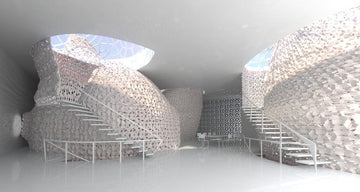Tips for 3D Printing Custom Game Components:
Choose the Right 3D Printer: To get started, you'll need a 3D printer. Ensure your printer has a build volume large enough to accommodate the components you plan to create. Fused Deposition Modeling (FDM) printers are a good choice for beginners due to their affordability and ease of use.Select Suitable Filaments: The choice of filament is crucial. PLA filament is an excellent option for most board game components. It's easy to print, comes in various colors, and is relatively inexpensive. Consider specialty filaments like wood or metal-infused PLA for unique textures.
Find and Modify 3D Models: Numerous websites, such as Thingiverse and MyMiniFactory, offer a wide selection of 3D models for board game components. You can search for models related to your game of choice. If you can't find what you're looking for, consider modifying existing models or creating your own using 3D modeling software like Tinkercad or Blender.
Scale Appropriately: Ensure that the dimensions of your 3D-printed components match those of the original game pieces. You may need to adjust the scale when importing or exporting models to ensure a proper fit.
Print Quality and Speed: Balance print quality and speed based on your preferences and the complexity of the components. Fine-tuning settings like layer height, infill density, and print speed can significantly impact the final results.
Paint and Finish: After printing, you can enhance the appearance of your components by painting them with acrylic paints. This step allows you to customize colors, add details, and achieve a polished look.
Templates for Custom Board Game Components:
Now, let's explore some templates and ideas for popular board games:Settlers of Catan: Enhance your Settlers of Catan experience by 3D printing custom settlements, cities, and roads. You can find numerous designs online, including themed sets for different Catan expansions.
Ticket to Ride: Create custom train cars for Ticket to Ride to match different regions or designs inspired by real-world railways.
Scythe: Scythe is known for its beautifully designed mechs. You can find STL files for 3D printing various mechs to replace the standard cardboard tokens.
Risk: Upgrade your Risk armies with 3D-printed tanks, infantry, and artillery pieces, each representing a different army.
Dungeons & Dragons: For D&D enthusiasts, 3D printing allows you to create custom miniatures for your characters and monsters. You can also print terrain pieces, like dungeons, forests, and caves, to build immersive landscapes.
Chess and Other Classics: Customize classic board games like chess by 3D printing unique chess piece designs or personalized boards.
Card Holders and Organizers: Design and print card holders, trays, and organizers to keep game components neatly organized during play.






